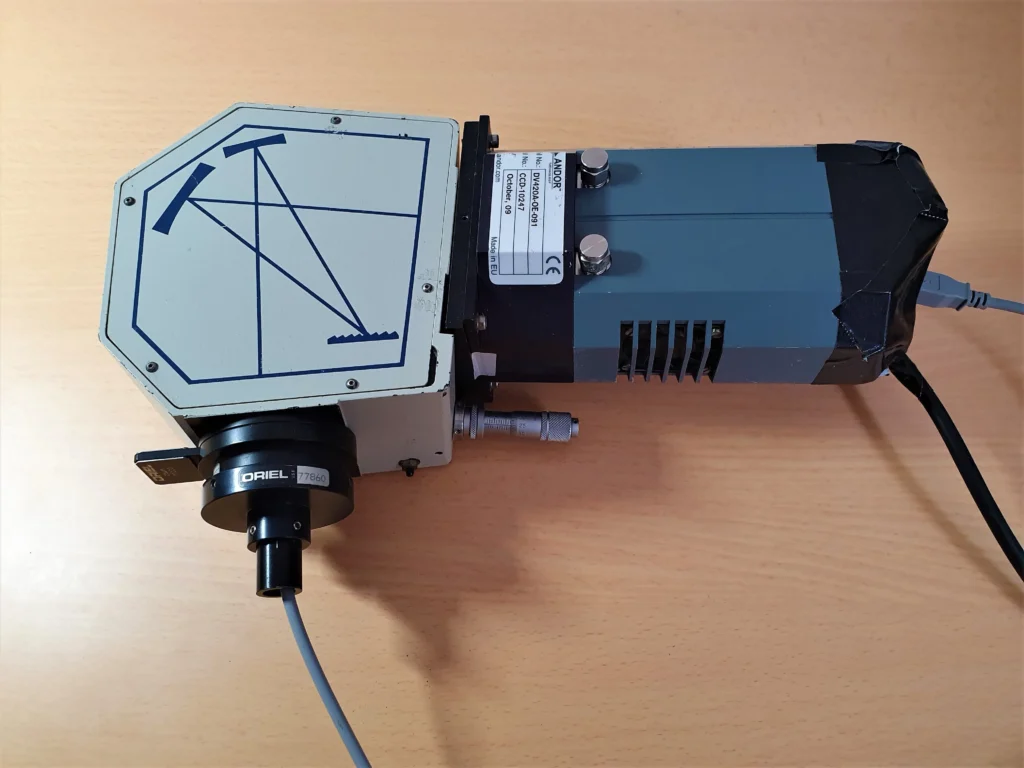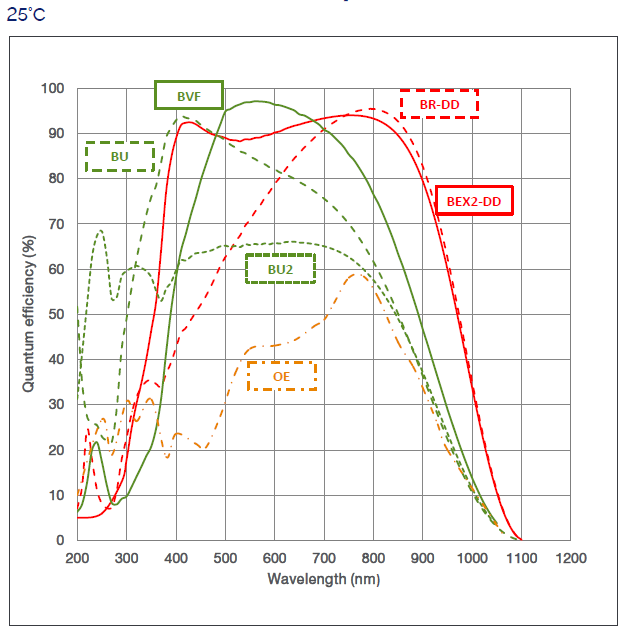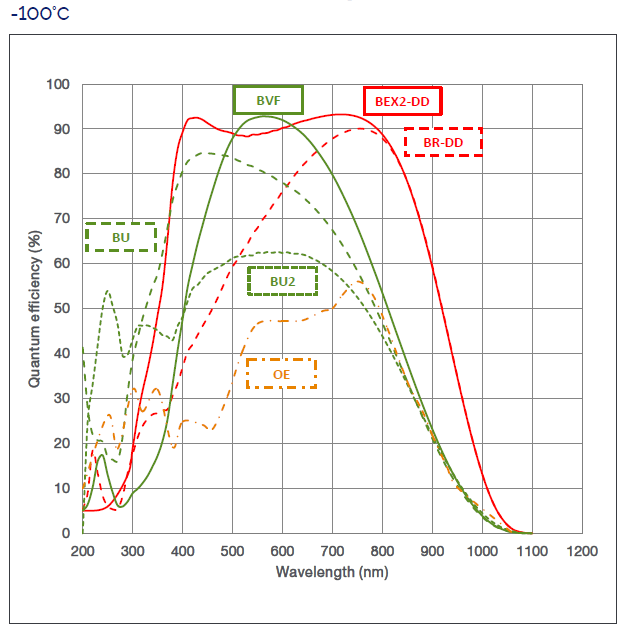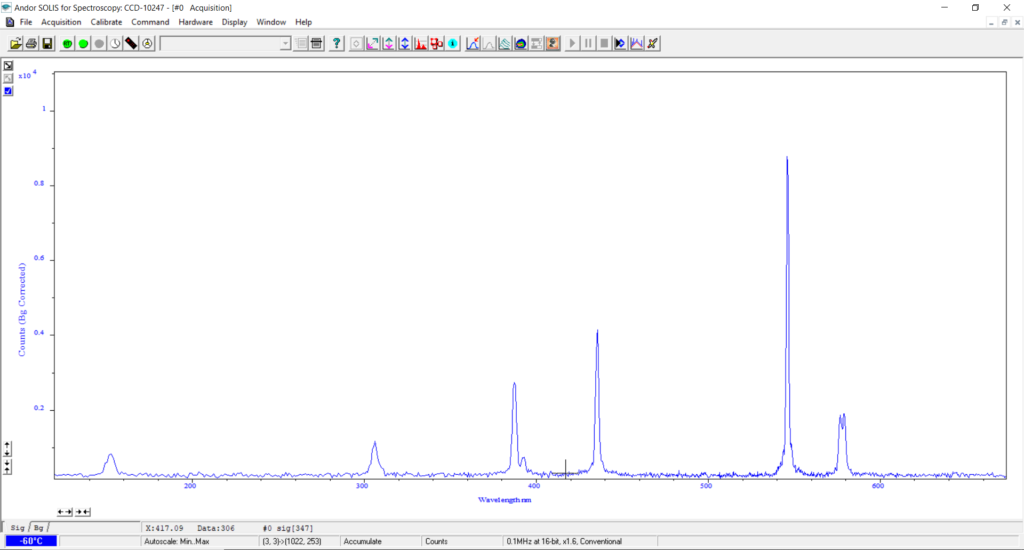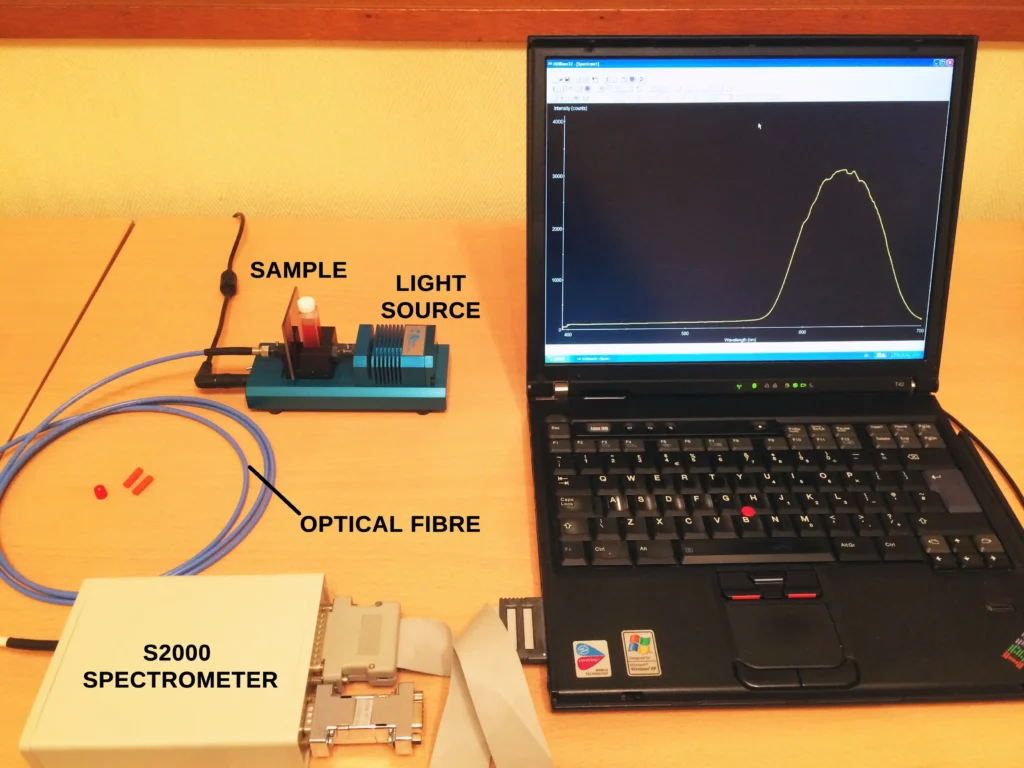In a previous post I described one of the “workhorses” I have been using for several years for recording spectra. This is the Oriel MS125 spectrometer coupled with an InstaSpec IV CCD (Charge Coupled Device) from Andor Corporation. The main limitation of this system was that the software for the detector only ran under DOS ! Yes, you hear me right – that old dinosaur! Microsoft’s DOS. To make matters worse, there was no possibility of upgrading the system to Windows.
There wasn’t even mouse support! 😂
Fortunately I was in a position recently to acquire another second hand MS125 and this time the spectrometer came with a more sensitive detector with much more modern Windows software! Here is an image of this new system:
This system looks virtually the same as the previous one. In fact, this second MS125 is exactly the same as the one described here. The big advantage is that all the gratings and entrance slits are compatible and also compatible with the Oriel Sighting Optic which is described in this post.
The new detector, though, is a significant upgrade on the InstaSpec IV, and this is the iDus 420A OE from Andor Technology. This sensor has 1024 by 256 pixels, with each pixel measuring 26 x 26 µm.
The “OE” in the name means “Open Electrode”. An open electrode CCD is a type of front-illuminated sensor that has a more open electrode structure compared to the standard type. As a result, more light can get through the complex electrode matrix that is typical of front illuminated CCD’s and can penetrate the depletion region. The depletion layer is the light sensitive region of any charge coupled device. The end result is that an OE sensor is considerably more sensitive than a regular front-illuminated type, albeit not quite as sensitive as back-illuminated devices. The latter, however, are much higher in cost.
For an explanation of back-illuminated CCD’s, this is a useful link.
Quantum efficiency (QE) curves for various sensors at 25C and -100C are given below:
The software to control the iDus 420A is called Solis and runs under Windows 7 through 10. Here is a typical spectrum obtained with this system that shows the user interface:
Last Words
So, after quite a few years of sterling service, my old and venerable MS125/InstaSpecIV combination has been recently relegated to the cupboard of my home lab. The last few blog posts describing spectra have been carried out successfully with this new system. My old system will, nevertheless, play a role as a backup in case of failure of other spectrometers and detectors.
But (thank goodness) Microsoft’s DOS has now gone forever in this particular home lab!
